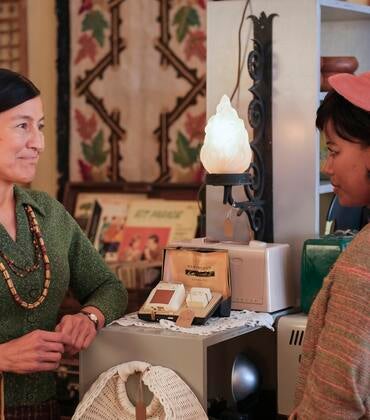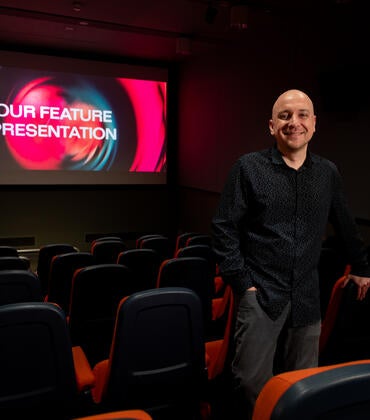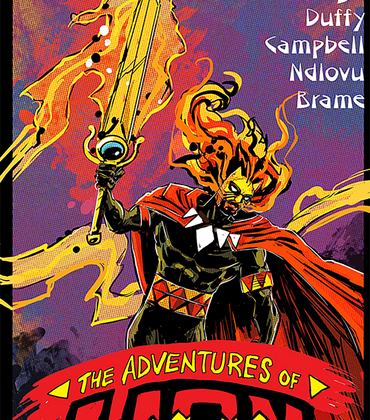
When you cross the second-floor catwalk to see “Shadow Archive: Meggan Gould,” on view at the California Museum of Photography, or CMP, through July 27, you will discover not one, but two exhibitions that sprung from a third.
The images on the left outer wall before you enter the gallery space are from Gould’s “7 Pictures Remaining.” Her interest is in the seemingly generic icons on cameras that shape camera users' perceptions and photography. For instance, a silhouette of mountains directs us to think of landscapes dominated by mountains. A woman signifying portrait mode might play into the long history of man as artist and woman as subject.
Part of this research included the viewfinders, dials, and the film frame counters that — in the analog days of film — let the photographer know how many exposures were left on the film roll. The images on the outer wall, which continue in the gallery, are of these film counters.
The exhibition has 36 inkjet prints created from original lumen prints and present only the counter as if it hovers in space. A striking thing about the images is that they resemble the bottom of a bullet casing, which can lead the viewer to consider the language we use when we talk about “shooting” photos and shooting firearms, which was unintentional.
“I don’t know anything about guns, so that was a surprise,” Gould said. “I’ve written about the terminology that photographers use in relation to guns or war.”
We shoot people, capture images, we hunt, stalk and focus on subjects, and it leaves one to contemplate the predatory nature of photography and perhaps the limitations of language.
In the gallery there are also seemingly unrelated images of everyday people going back decades, judging by the fashion and cars, doing everyday things like taking holiday photos, vacation photos, photos of kids, pets, and family gatherings, including stereoscopic images.
“One day I was handling a camera and opened the back. I saw the exposed film and thought, ‘Oh, no, I’ve ruined the pictures’,” Gould said. That moment sent her on a mission to recover and develop all these left behind and forgotten pictures hidden in the cameras of CMP’s Technology Collection.
“There were hundreds of negatives,” Gould said, “All these intimate moments from people’s lives locked in cameras sitting on shelves. I felt a responsibility not to lose another photograph. Who knows, maybe someone will come in and recognize a relative or a friend from long ago.”
The exhibition’s curator, Kathryn Poindexter-Akers, head of exhibitions said photographer Allan Sekula coined the term “shadow archive” to describe private, “vernacular employments of photography,” in contrast to photographic archives that have been preserved for their empirical and ideological value.
The writer Billy Anania wrote of the shadow archive that it is a “space in which disparate identities are equalized through juxtaposition.” Think of a series of photos from a yearbook exhibited alongside booking photos or identification card photos. Here one juxtaposition is with the social class of people unknown to each other, who possessed cameras, and the cameras wouldn’t hold enough sentimental value to be passed on to the next generation.
Another juxtaposition is created with Gould's fine-art photographs set against the everyday photos of people. In Sekula’s definition of the “shadow archive,” vernacular photography is described as functional and lacking any artistic intention. None of the found and saved images have artistic intent. But sharing the gallery space, the fine art prints and the snapshots create a poignant symmetry, like recovering a memory and seeing the beauty in it, even if by chance.




